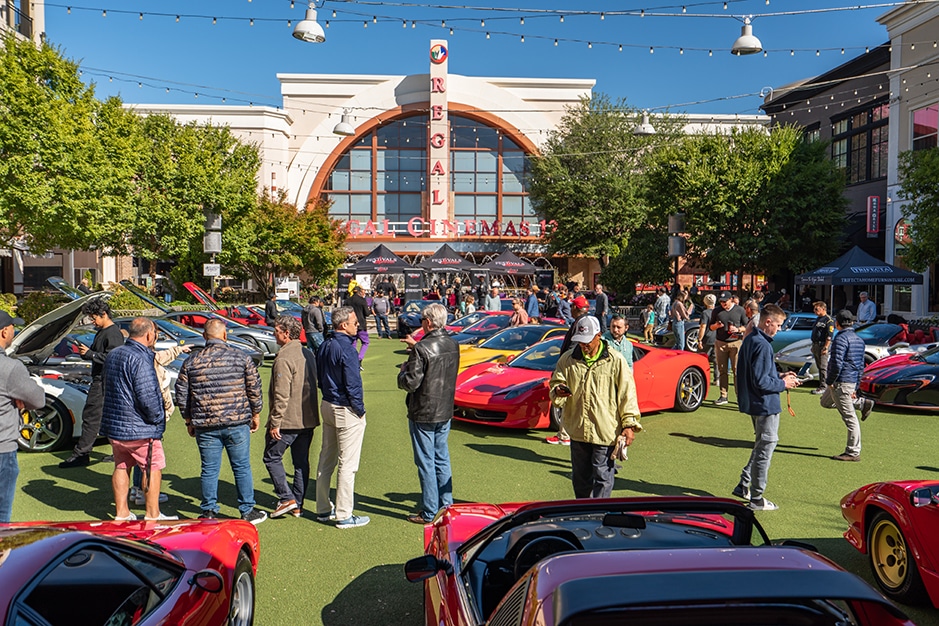Buckle up for an exhilarating ride through the world of exotic car collecting with host Tom Ruggie, Founder & CEO of Destiny Family Office, as he sits down with Joe Sabatini, the President of Festivals of Speed. Discover the captivating origin story of Festivals of Speed and how it evolved from a small gathering to the ultimate luxury showcase for exotic and classic cars, motorcycles, boats, and more.
Tom and Joe explore the diverse landscape of car collectors, from enthusiasts with a single cherished vehicle to apex collectors with impressive hundred-car collections. They uncover the powerful role of nostalgia in driving collectors’ passions, as they seek to fulfill childhood dreams and relive cherished memories through their automotive treasures.
Gain insights into the investment aspect of exotic car collecting and the delicate balance between passion and profit. Learn about the importance of succession planning and charitable contributions in preserving and leveraging the legacy of exotic car collections for future generations.
Join Tom and Joe as they rev up the engines and take you on a thrilling journey through the fascinating world of exotic car collecting. Whether you’re a seasoned collector or an aspiring enthusiast, this episode promises to ignite your passion and inspire you to explore the significance of wealth beyond mere monetary value.
The expressed views, thoughts, and opinions in this episode of The Significance of Wealth belong solely to the host and/or guests and are not investment recommendations or offers to buy or sell securities or private investments by Destiny Wealth Partners or its affiliates. This podcast is for informational and educational purposes only. For more information on our disclosures, we invite you to visit www.DestinyFamilyOffice.com/disclosures.
Key Takeaways
Tom Ruggie and Joe Sabatini explore several important topics not only for car collectors but for collectors across categories. We encourage you to listen to the full episode to digest all of the incredible insights offered with complete context. However, we’ve captured some of the most important and salient takeaways below.
Nostalgia plays a universal role among collectors in shaping their collecting pursuits.
Nostalgia is one of the most powerful forces drawing collectors to cars, regardless of age or demographic. Collectors covet that car that they once yearned for in their youth, whether it hung on their wall in poster form or belonged to a neighbor. As proof of the unflappable allure of nostalgia, Sabatini offers an example of a prolific car collector who owns several eight-figure cars. But one piece of his collection doesn’t sync thematically with the rest of his prizes, and for good reason: nostalgia.
“One of the first cars he purchased to start his collection when he came out of college was an ‘82 Chevrolet Corvette Collector’s Edition; it was a limited edition car.” Sabatini recounts. “When I’m looking at this collection, and I see all these vintage Ferraris and incredibly expensive cars, I see this car, and I said, ‘I personally think the world of this car, but I’m surprised it’s in your collection.’ And he told me, ‘I saw this car when I was a young man, and I swore the day I could afford it when I start to collect cars, this will be one of the first cars I buy, if not the first.’”
To understand the value of a car, we can scientifically consider all the specifications, the year, and the condition, but nostalgia remains this ethereal force that can untether collectors from the hard facts in pursuit of a long-desired target.
Nostalgia means different things to different generations, creating differences in demand that can shape market trends and performance over time.
Each generation feels a nostalgic pull to different material. While older collectors covet automobiles from their youth, they’re surprised to learn that younger generations pine instead for the cars of the moment from their childhood.
“The new collectors are coming in, and they are the younger generation that’s buying the cars that, when they were children, they saw it, and it was their dream car,” Sabatini explains. “Those cars are from the 90s.”
Sabatini and Ruggie consider the example of Japanese sports cars (specifically citing the Toyota Supra) and their appeal to younger generations, which was unforeseen to older collectors. That newfound demand perfectly reflects how shifting demographics can give rise to trends that shape the current and future complexion of the market.
Contrary to popular belief, car collecting is not an exclusively male pursuit, as female collectors represent an increasingly significant portion of the car collecting population.
Age-related demographics aren’t the only ones driving shifts in the collecting population.
Sabatini is quick to point out that, despite stereotypes, the car collecting hobby is not exclusively male:
“Right now, at least 30% of my collectors are female, and that number is growing every year. The female car collector demographic is growing rapidly; there are a lot of women with significant car collections.”
At his Festivals of Speed events, Sabatini frequently engages with couples who participate in the hobby together as a passion pursuit. He also notes the example of a self-made female collector with 12 supercars exhibited at the festival as an exciting sign of the times.
Some collectors are motivated purely by passion and others purely by investment potential. Most collectors exist on a spectrum between these two extremes.
Sabatini fondly recounts a gentleman who came to one of his events smoking cigarettes inside his $4 million Bugatti (a must-listen story). That, of course, is something an investment-focused collector would never do. But this collector was wholly unconcerned with the resale value, illustrating the 100% pure passion-based extreme of the collecting spectrum. On the other end, Sabatini notes, are those who buy cars with the sole intention of flipping them.
Many collectors exist between these two extremes, driven by passion but discerning about resale and return prospects. They can buy what they love while perhaps retaining an informational edge and confidence in the car’s ability to hold value and appreciate.
Sabatini characterizes one type of collector that fits that mold: “There is the collector that has been around for a while who has bought and sold cars privately for the last 35 years, so they really know the market. For the most part, a lot of those, when they’re dropping significant money on a car, they’re not just buying it out of 100% passion anymore, because they probably had a similar car to that over the last 35 years. Especially in the last 4-5 years when the pandemic drove prices through the roof, they’re buying with a very serious commitment to the investment.”
Insufficient planning remains alarmingly prevalent among collectors, even some of the smartest and largest.
Sabatini frequently sees how the failure to plan adequately around collections can create negative consequences; that negligence is common whether the cars are worth hundreds of thousands of dollars or millions and millions. “Unfortunately I see [insufficient succession planning] almost every week. These are very smart people. You don’t build a fortune like that unless you’ve thought through what you’re doing. But tragedy happens. If they don’t have their ducks in a row, if it’s not written down, all of a sudden the wife and the sons and the daughters are left with a significant collection of cars they might not know anything about. There’s a certain element out there that preys on that.”
With the right planning mechanisms in place, collectors can avoid exposing their heirs to that predatory behavior. As Ruggie alludes to, though, this failure to plan isn’t exclusive to car collectors, and in pursuing their passion, collectors in all categories often compartmentalize their collection assets from the rest of their finances, leaving heirs woefully unprepared in the unexpected case of their absence.
“I see it especially in the antique boat world,” Sabatini adds, offering the example of a collectible asset that requires incredible work and upkeep. “It’s the husband that’s really into the boat. He passes away. She immediately calls his friend and says, ‘I don’t know what to do with this. I know it’s a lot of work. I’ll just take whatever I can get.’”
Because the collector hasn’t executed the proper planning or shared pertinent information, their heirs don’t know what they’ve inherited. Importantly, without those details, they have little chance of attaining fair value. By simply sharing critical information – including fair value estimates – or giving heirs a means of accessing it, they can ensure significant value isn’t forfeited in a fire sale motivated by unwanted complexity.
There’s so much to learn from this engaging discussion, and we encourage you to listen to the full episode for more of the valuable insights shared above. Among the subjects we haven’t covered here:
- The role of passion among collectors as a potent social glue that brings communities together.
- The collecting behaviors of “apex” car collectors and their motivations.
- The one car-adjacent investment every savvy car collector is chasing.
Are you a collector?
Complete Your Collectibles Scorecard
Our Collectibles Scorecard examines your current position and your desired goals in crucial areas of collecting: acquiring, preserving, cataloging, insuring, valuing, and ultimately passing on your cherished items. By completing this scorecard, you’ll gain invaluable insights to safeguard yourself, your collection, and your loved ones. It will highlight areas needing attention, empowering you to take actionable steps alongside your trusted advisors, enhancing your peace of mind.


